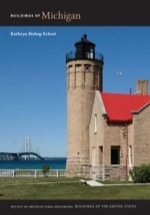
By the last quarter of the nineteenth century, many of Saginaw's wealthy lumber barons and industrialists lived on the east side, particularly on or near S. Jefferson Avenue. In May 1893 the worst fire to strike Saginaw began around the sawmills, near the site of the present city hall. It consumed hundreds of buildings in a one-mile-long and four-block-wide swath. The buildings on S. Jefferson Avenue were destroyed by the blaze because the avenue's dry ridgetop location and dense settlement of wood homes fueled the fire. While the fire was a major catastrophe for the community, the reconstruction of S. Jefferson transformed the avenue into a distinctive chronicle of the architectural styles that prevailed as Saginaw left its lumber era and adjusted to a new economic order. Queen Anne and Eastlake styles predominate from the years immediately following the conflagration; period revivals and Prairie and Craftsman styles take the upper-middle-class neighborhood through the first three decades of the twentieth century.

